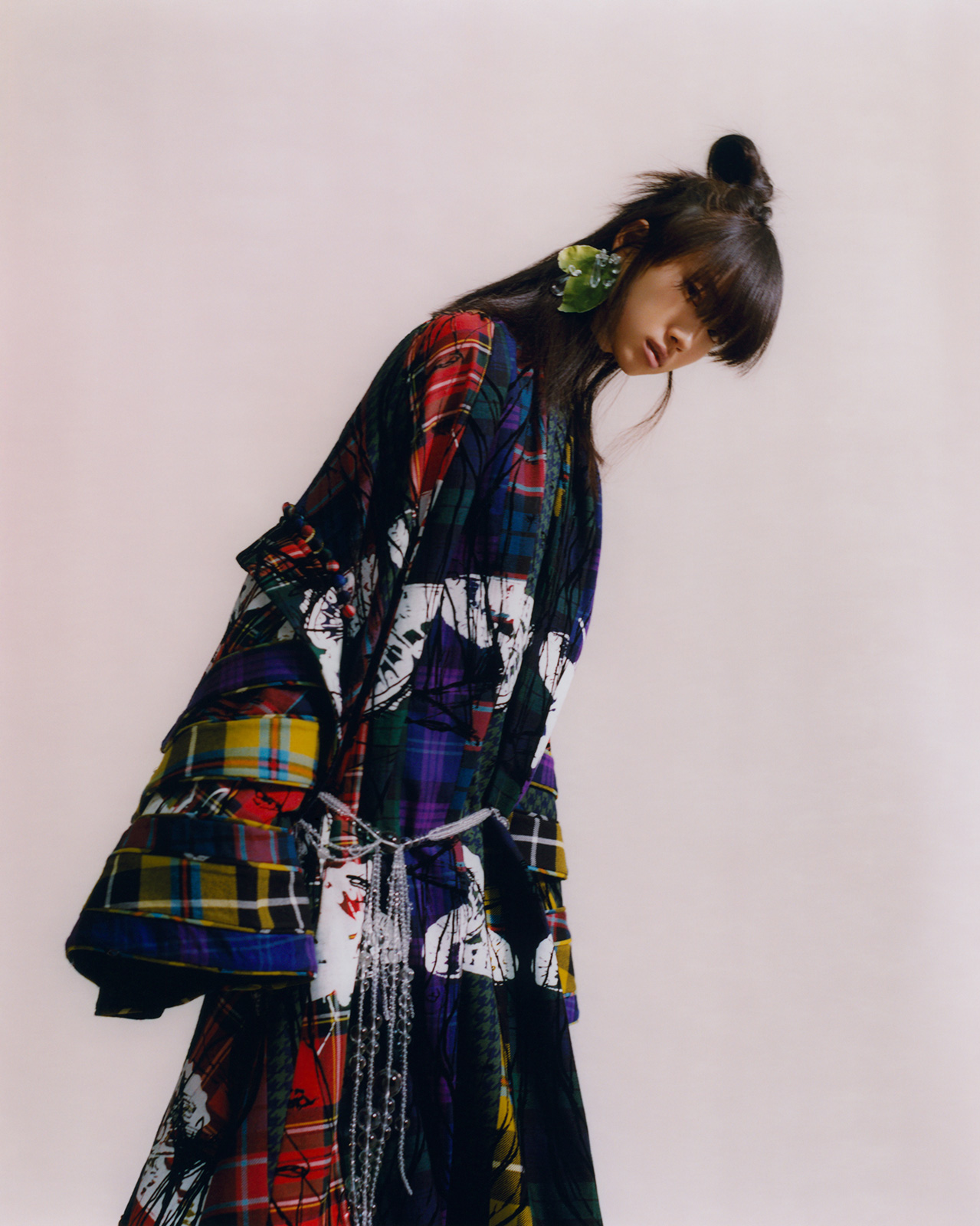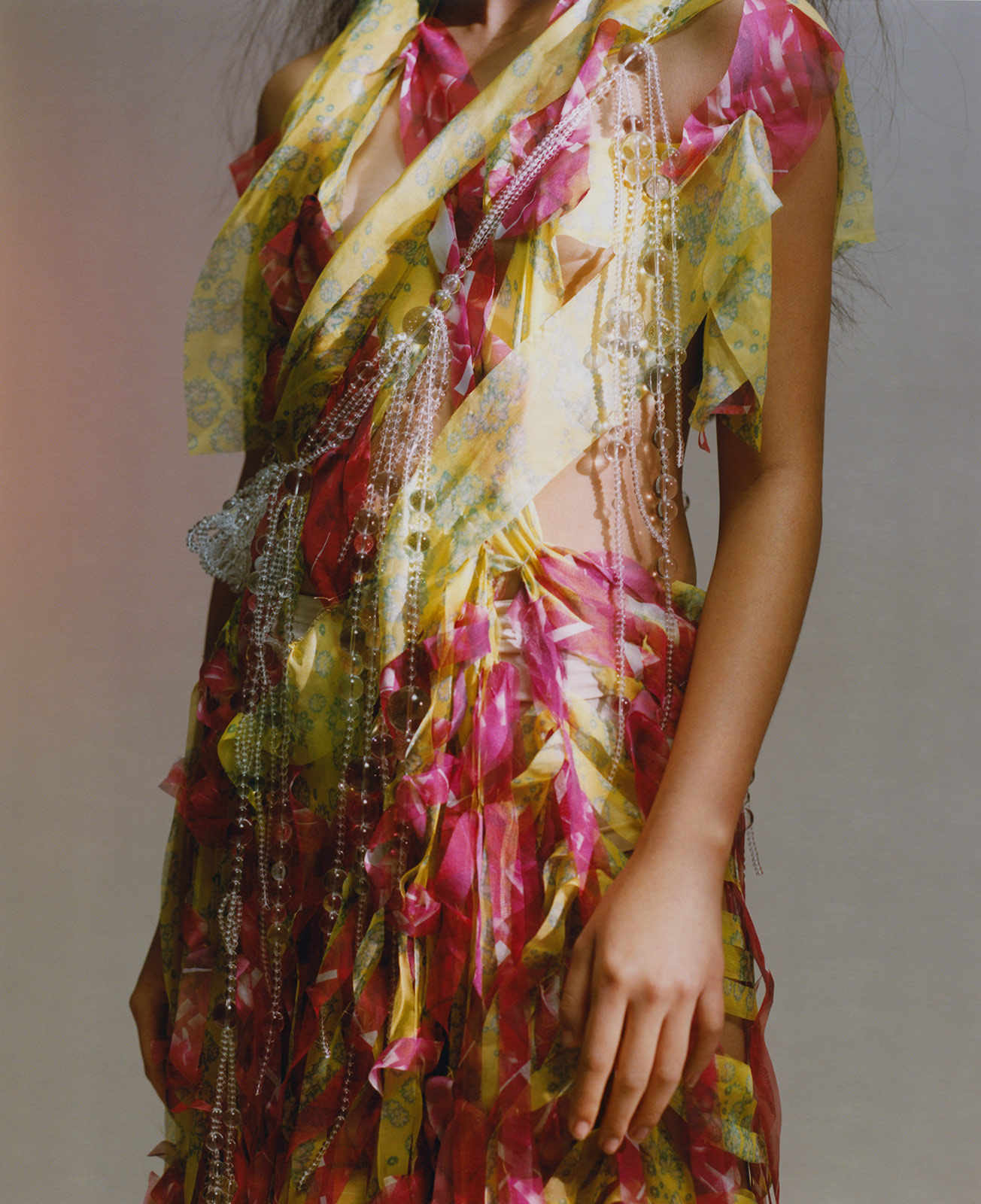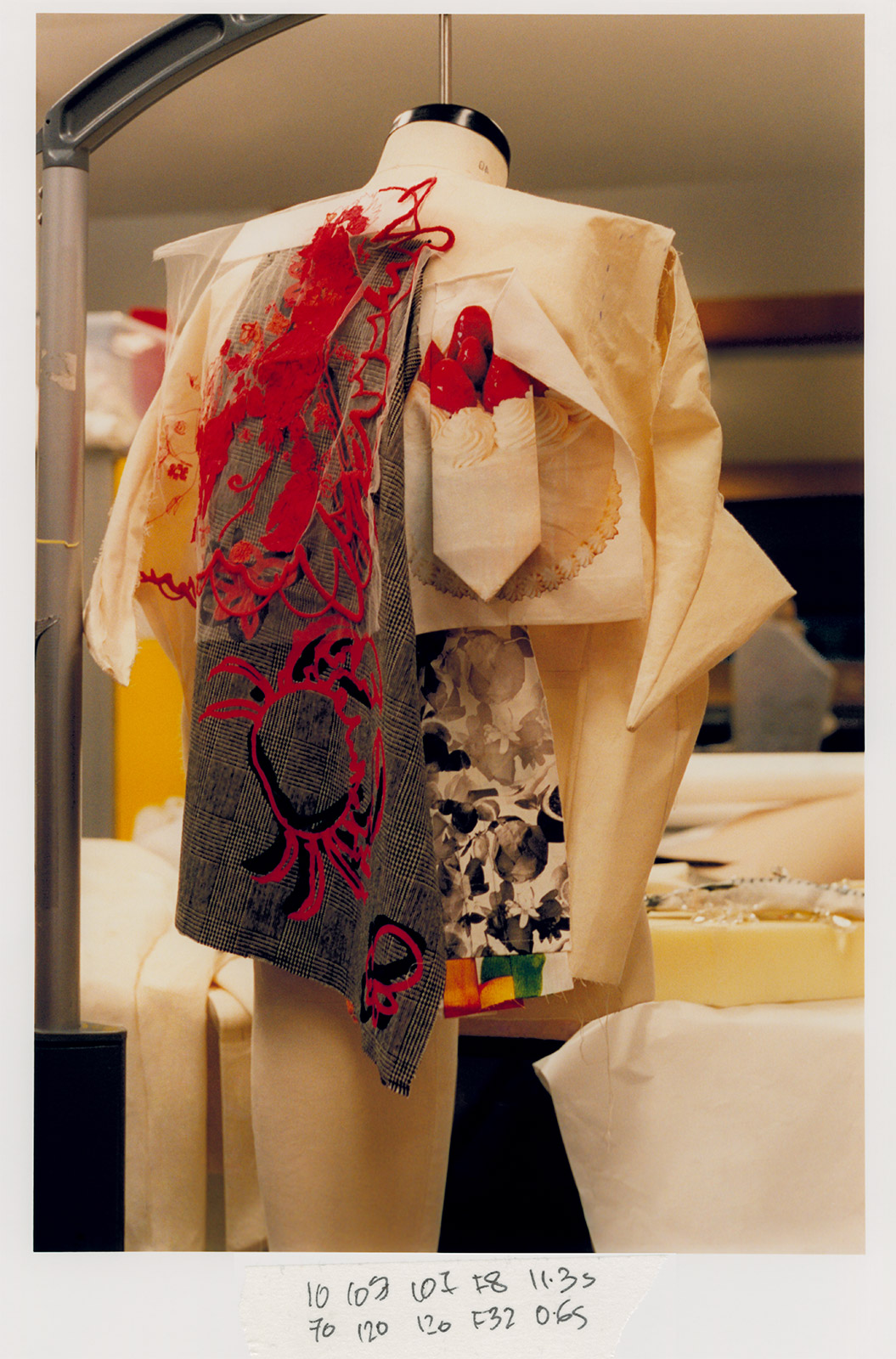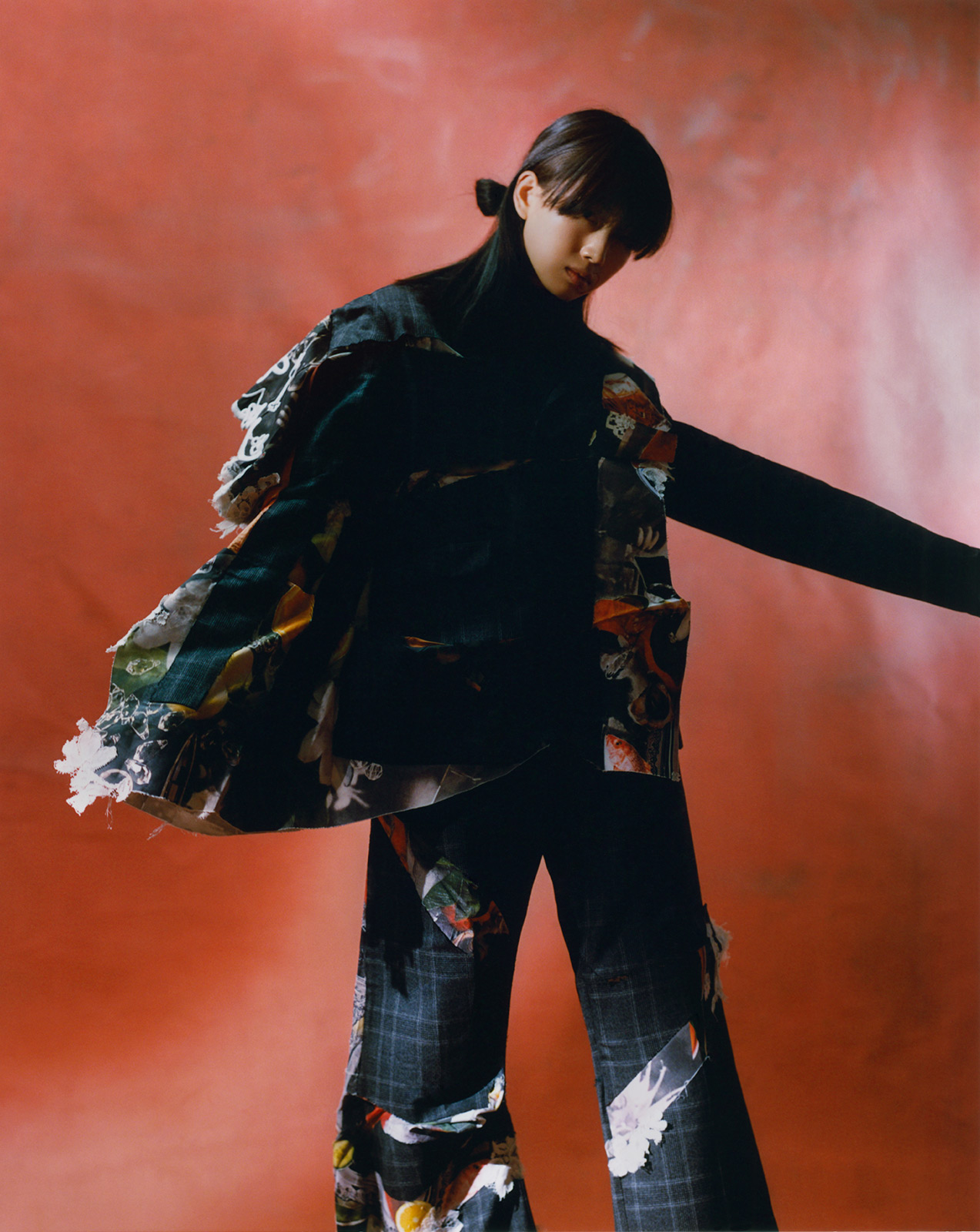In the midst of globalization, appropriation, and rising nationalism, meet the designers redefining fashion's view of "the East."
Fashion capitals are no longer exclusive to the West. They are the eastern cities of Tbilisi and Kiev; Singapore, Hong Kong, Tokyo, and Shanghai. Brands move to create shows specifically for Japan and China, presenting their collections directly in Asia’s massive luxury fashion market. But while the market is certainly moving at an astonishing pace, what it means to be a designer of Eastern heritage in an industry that holds fast to Western standards remains up to interpretation. After all, culture is not so easily defined, it is something ambiguous and personal; where the fashion world typically speaks of China as a market and Japan as an aesthetic, a new wave of designers is showing diverse and relatable outlooks on the culture they were born into and have chosen to participate in.
Iconic designers Yohji Yamamoto, Rei Kawakubo, Issey Miyake, and Yang Li have set the tone and shaped the way we see Eastern aesthetic, yet there are still questions of cultural appreciation and appropriation, and of what the future holds for the next generation. Are Gucci’s Orientalist designs more “authentic” than an Asian designer’s creation? Is brands’ attention to Asian markets just a surface level interest or can the industry move beyond superficiality? Do Asian designers have an obligation to pay homage their culture’s historical style or should they explore beyond a pigeonholed view of “the East?”
The melting pots of fashion metropolises like London and New York have been flourishing with promising talent from across all backgrounds, despite the rise of nationalism and the closing of borders, from Brexit to Trump’s wall. How this new wave of designers responds to the cultural climate is something to be considered. Their work is as distinct as their ideas on life, and is reflective of it, and the evolution of their craft will be an evolution of the way Asian culture and aesthetic fits into the fashion sphere. As culture increasingly becomes a commodity, and the subversive, niche, and marginal become lucrative identities breaking through the noise of the industry, we look to these bright young minds to give us fresh perspectives and insight into what inspires and motivates them to create. It isn’t just about tradition or expectation, it’s about how they experience and react to their surroundings. The following designers have chosen London as their center for creative expression and their relationship to this duality of culture. Through their eyes we are looking to a future of boundless, intimate, ever-reinterpreted creation.
Lulu Yao Gioiello—What does culture mean to you? What does it mean to the fashion industry?
Jamie Huang—Fashion is transformed from culture, it just appears in a different way. It’s the same thing in a different format.
Jie Wu—Culture for me is power. For the fashion industry, it’s a tool that we use to link to the world of dreams.
Ki’ami—Culture obviously informs everything in everyday life, even when we don’t notice certain aspects of it. Sometimes it weaves through our lives very subtly and we can hardly notice it, but it is always there. The fashion industry similarly reflects culture, regardless of where it gets the inspiration from.
Wenjun Zhu—Culture, to me, is the way how people breathe and live their lives. Culture creates an art space for designers to explore and create.
Leeann Huang—Culture has a lot to do with identity. What I like and choose to look at, listen to, eat, and interact with defines ultimately who I am, my values, and how I work. I think the same goes for the fashion industry. How it works, the people within it, and what it chooses to be popular really defines what it is and its values.
Carmen Channers—Culture is our way of life combined with the heritage which we all come from. It is unique in every one of us as we all come from such diverse, complex backgrounds and also lead such different day-to-day lives. Culture is what adds richness, depth, and meaning to an otherwise frivolous fashion industry. Not that anything is wrong with frivolity!
Thomas Chu—My cultural background largely shaped my identity and affected how I see the world. I think it is very important to stay true to that and always look back to your roots, which help to tell your own story through your designs. The fashion industry is constantly growing and it is more inclusive than ever before. Other than focusing on your own roots, designers also have to be mindful of other cultures and respect them.
Robert Wun—Culture has became a more and more important subject to me as I grow. I believe it is because of the odds that I am facing almost everyday as a POC living in a western society, where other cultures are commonly being alienated or misunderstood. Fashion is a part of culture itself, and I am very excited about the topics that have started lately in the fashion industry, about equality and diversity. I believe conversations are going to start a real change, and I genuinely wish to be a part of this movement, but more importantly I do not want to mistakenly fall into a “trend” and further stereotype myself and my culture, I think that only [limits] creativity to the individuals and doesn’t truly celebrate genuine talents. Hopefully, one day, true diversity means different talents being celebrated doing what they are good at regardless of their cultural background and skin color—getting somewhere without using ones heritage as a selling gimmick.
Hinako Nakazawa—I believe that culture is the living heritage and the memory of the ancients.
I was born in Japan but I love learning the new cultures such as European, Indian, Chinese, African, and Egyptian. Each has unique beauty created by a massive amount of time and effort. However, sometimes this uniqueness causes racism. Personally, these varied domestic cultures inspire and teach me to see the world with different perspectives and new angles. It gives a new essence to modern fashion trends shared worldwide…On the other hand, today we are sharing one new culture without geographical or time barriers, which means there are fewer possibilities that unique cultures will grow as [they did] before 19th century. Fashion trends now have a very short span. I feel that it is [because of] lack of time to deepen one single idea, and I am opposed to the situation.
Lulu—How does culture color your world and your designs?
Jamie—Art, design, and fashion design come from culture. Each city has a different color. As long as it’s true to itself, then I think it’s beautiful.
Jie—Everyone comes from different places, has different cultures, likes different things. I like to mix different things together, just like making a cake.
Ki’ami—It doesn’t affect designs as such, but it does affect the way we think and how we approach our work.
Wenjun—As a designer with multicultural background, the cultural diversity of Chinese and Western society has brought a lot of new and innovative perspectives to my design.
Leeann—I’m Taiwanese, and born and raised in California, so the topic of cultural hybridity manifests a lot in my life and my work. My work often references and melds a lot of films and artists in imagery and story that explores the experiences of Asian, American, and Asian American people. Films like Ang Lee’s Eat Drink Man Woman and Itami’s Tampopo, music like disco, and artists like Yasumasa Morimura, who explore and celebrate hybridity, exchange, and even appropriation in culture are a big influence on my work.
Carmen—Growing up in Kuala Lumpur and Hong Kong, the cultures I was immersed in physically, emotionally, and mentally have been very vivid and boisterous. I was always spoilt for choice when it came to garish surroundings and hilariously sarcastic family members and friends. I do think all of it has really shaped who I am, as well as the attitude with which I run my creative practice.
Thomas—Growing up in Hong Kong, I was very much influenced by Eastern culture. When I moved to the States and then moved here to London, I was exposed to a different way of communication and living. The comparison between the different cultures inspires me to find my own way of designing.
Robert—I do feel a strong influence in my work from cultures. I learn something new about different cultures every day, and I mostly focus on the poetic or spiritual meaning behind those inspirations, instead of directly copying and pasting some visuals, like textiles or patterns. I feel that way I would be able to bring something new to the table with more personal interpretation.
Hinako—Through my time spent at Central Saint Martins, I know I have been witness to many different cultures. The spectrum of the world, for me, is as varied as the work in the British Museum. For instance, I love playing Chinese board games, learning Greek architecture, learning British mythology, seeing African accessories, learning Native American philosophy, and doing Indian makeup. It is difficult for me to choose only one thing among this if someone asked me what I love the most. I would like to call it my “creation,” that includes all of my knowledge from various cultures, even if it makes me appear greedy.
Lulu—Do you feel that the current cultural climate is beneficial or detrimental to you?
Jamie—I don’t see culture in this “trend” way. It’s just living—as long as we live then we have thoughts, experience, and emotions. That’s where the story comes from, which becomes an art piece, a poem, a song, or a garment.
Jie—It’s hard to say. I’ll stay neutral.
Ki’ami—It is hard to say. There are certain things that could make it more difficult, for instance appreciation of intricate handcraft, but there are also things that haven’t changed since we started.
Wenjun—I can’t tell. Every cultural environment is brand new and unique for us, especially in the era of technological shock. We are exploring all the topics in our lives, where we can see humanity, politics, or technology. You never know until you really try.
Leeann—Beneficial, in that there’s a lot of adversity because of diversity in culture right now, and that has made me really question and explore and redefine who I am as a person, as a designer, but also as a Chinese and/or American woman.
Carmen—It’s great because you’re constantly surrounded by people of different backgrounds, especially in the setting of a city. You have fantastically testing conversations of your experiences and views of the world with others and this builds a community of discussion, friendship, and apathy. But in the grand scheme of the fashion industry, there’s also the risk of sanitizing or taking advantage of a particular culture in pursuit of capitalistic gains, especially when it is reinforcing negative stereotypes or exploiting foreign labour for instance. Culture is political, whether you like it or not.
Thomas—I think the fashion industry is more inclusive now, and it is easier for Asian designers to tell their own story.
Robert—Most certainly it has given me more opportunities in exposure and talking about my perspective in these topics. But, as mentioned before, my goal really is to be a good designer, and not to be known as a Chinese designer good at doing Chinese-relevant design, which is what the current climate might easily label us as.
Lulu—Realism, mysticism or abstraction?
Jamie—All of it.
Jie—It depends on the mood and events I want to express at that time.
Ki’ami—Definitely realism. We are two designers and we found that this is the best way of working together.
Wenjun—Realism and abstraction.
Leeann—Realism. I often think I am a very literal and immediate person with work and everything really. My style is very kitsch and romantic and I think surreal, but it all plays with and relies on realism.
Carmen—Mystical abstraction
Thomas—Mysticism perhaps? It depends.
Robert—Abstraction
Hinako—I really love surrealist artwork; the German painter Edgar Ende is my favourite.
Surrealist painters paint a dreamy world which never appears in our real one. Dreams are very abstract and exist only in one’s mind; they are not visible to others. But once an artist puts it on canvas, it works as a door to the world of their dreams for others. It’s really precious mind travel. Creating a dreamy world through fashion and giving an audience the opportunity to travel is the secret concept of my work, and this is my primary motivation when I create.
Lulu—What kind of promises have you made yourself? To your family?
Jamie—I will continue doing what I was doing three years ago three years from now, and never forget the original heart of it, whether in design, creativity, or life.
Jie—Be happy, be yourself, and be rich.
Ki’ami—To be honest.
Wenjun—To myself: Do what I want to do, in the end, no excuses, no explanations, no regrets.
Leeann—Be happy and grateful for whatever comes my way. Ultimately that’s the basic promise and goal I have for myself and the promise I’ve made my family. I think my family is very atypical compared to other Chinese or Taiwanese ones and really they just think it’s important that I’m happy, healthy, and fulfilled, and the rest they trust I can take care of. They don’t really understand fashion, so they don’t know what to expect, but they’ve seen me be successful enough that they don’t really worry.
Carmen—Keep caring and be creatively challenged, open-minded, and forever learning. Work towards a better future for us all, be it culturally, environmentally, or politically.
Thomas—I made a lot of promises to myself, some are short term and some are long term, but usually I don’t like to talk about them, as I want to keep them to myself. I prefer to talk about them when they are accomplished. As for my family, they aren’t really into fashion, so I don’t usually discuss my plans with them. Given that, I really appreciate how they allow me to go on my own path and still have faith in me. Actually, I think the promises I made to myself are partly to them as well. I want to pay them back for giving me this freedom.
Robert—My family never made me promise anything career wise, besides to be kind, genuine, and responsible to the world. And that’s what I promise to myself as well.
Hinako—I realized I haven’t changed my favorite books, movies, or artists since high school. I’m always trying to get new inspiration, but I think I have a very settled theme as my base. When I was a student, I was less confident about my creations and felt shy to show my work. But lately I am getting many opportunities, such as this interview, editorials, musician requests, and more. Also, many people give me warm messages through social media. My family doesn’t say too much but they always support me. I’m really appreciative for it and am cheered up by these precious opportunities and positive reactions. So, I have a stronger belief in myself than before.
Models Grace Guozhi at VIVA; Yihui Wang and Yerim Ko at MILK. Hair Sarah Jo Palmer. Make Up Linda Andersson. Production Teodora Budimir. Styling Assistant Lisa de Chiree. Photo Assistants Andrei Topli, Yzza Slaoui, Matt Bohun, Ella Holmes. Casting Director Abi Schwinck at Made Casting.



































